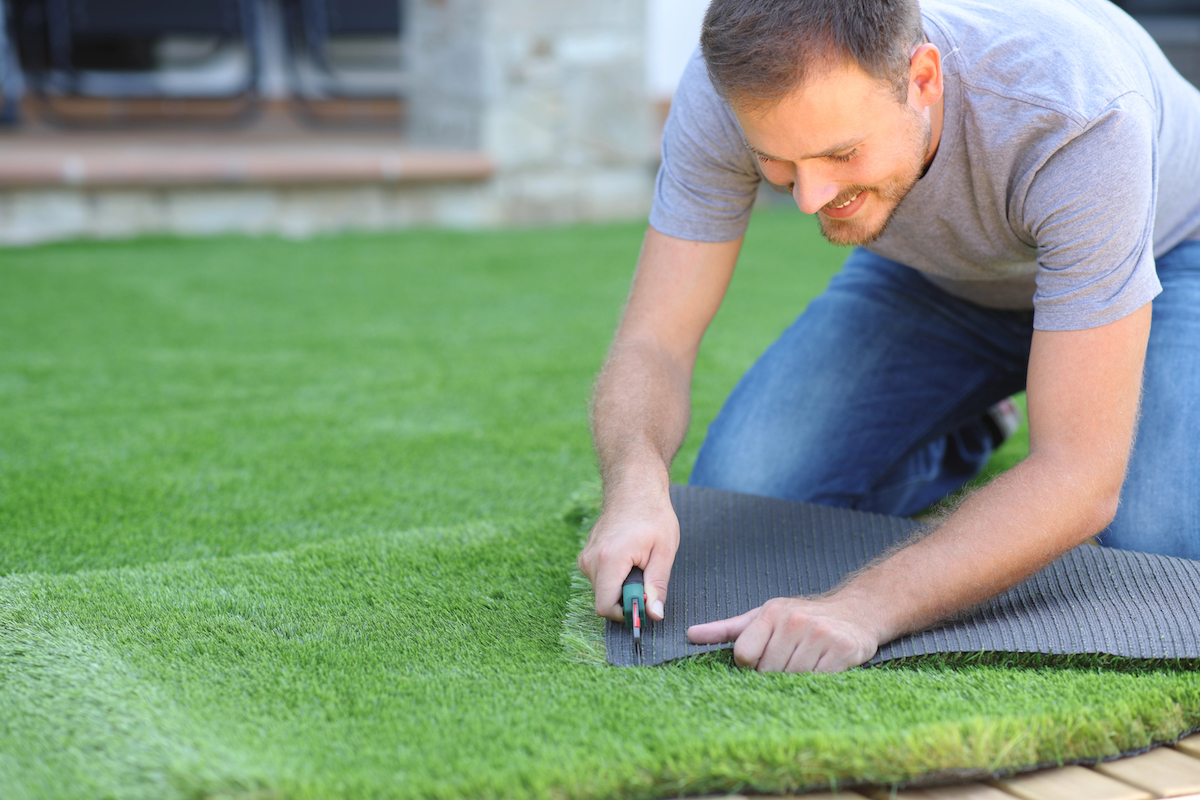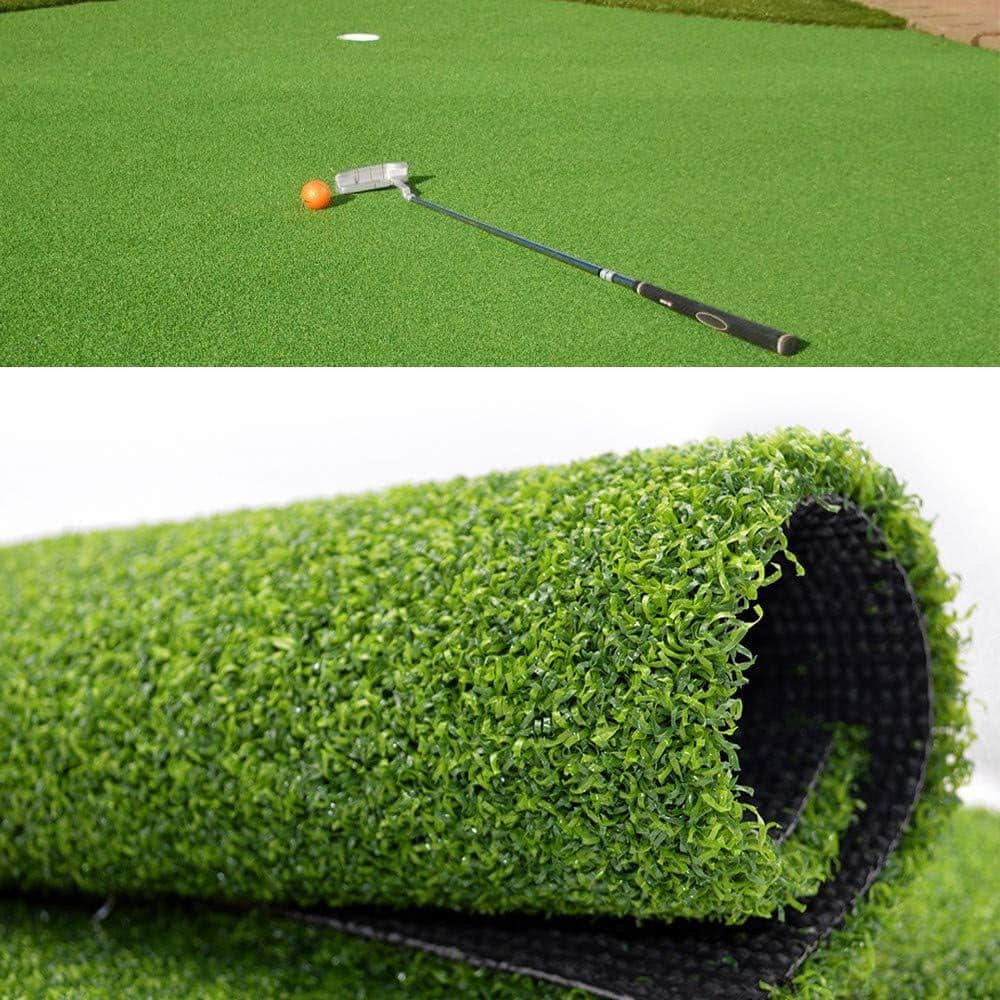Weather-Resistant Arizona Artificial Turf for Home and Business Applications
Weather-Resistant Arizona Artificial Turf for Home and Business Applications
Blog Article
See Why Homeowners Prefer Artificial Turf for Lasting Landscaping Practices
As house owners progressively focus on sustainability in landscaping, fabricated grass has actually emerged as an engaging option to typical yard. Its capacity to preserve water, lower maintenance initiatives, and lessen ecological effect placements it as a functional choice for those seeking green solutions. Moreover, the visual allure and convenience of synthetic grass provide to diverse layout preferences. The implications of this shift prolong past mere comfort and looks, prompting a more detailed assessment of how these selections influence wider ecological end results. What stays to be discovered is the complete scope of advantages that artificial grass can offer to home owners and the atmosphere alike.
Water Preservation Benefits
Among the most substantial advantages of synthetic grass is its function in water preservation. Conventional grass lawns require significant quantities of water to keep their lush appearance, usually leading to overuse of local water resources, particularly in dry areas. In comparison, synthetic turf eliminates this need completely, as it does not need irrigation. This not just conserves water but likewise minimizes the pressure on community water supply, particularly throughout drought problems.
Moreover, the setup of artificial grass can contribute to an extra sustainable landscape. House owners can dramatically reduce their water costs, enabling for reallocation of resources to other environmental campaigns or home uses. In addition, artificial turf is developed to withstand different climatic conditions without the demand for supplemental watering, making it a suitable option for areas encountering water deficiency.
The ecological advantages prolong past prompt water financial savings. By decreasing water intake, synthetic grass helps to reduce the influences of environment adjustment, protecting important ecosystems that are endangered by too much water extraction. As lasting landscaping techniques obtain grip, synthetic turf becomes an accountable choice for homeowners seeking to create environmentally friendly outdoor spaces.
Decreased Upkeep Initiatives
Synthetic grass dramatically decreases maintenance initiatives compared to conventional turf lawns. With man-made turf, house owners can remove the time-consuming tasks related to natural landscape design, such as mowing, fertilizing, and weeding. This not just conserves useful time however also lowers physical labor, making grass treatment easily accessible for people of every ages.
Standard grass call for regular cutting to maintain a cosmetically pleasing elevation, whereas man-made turf remains consistently rich without the need for reducing. Furthermore, property owners no longer require to apply fertilizers or chemicals, which are commonly called for to keep all-natural lawn healthy.
Furthermore, synthetic lawn is resilient and sturdy, requiring minimal maintenance beyond periodic cleaning and washing to get rid of particles. This ease of maintenance enables homeowners to appreciate their outside rooms without the continuous fear of upkeep, offering more time for recreation and family tasks. Eventually, the reduced upkeep initiatives related to synthetic grass make it an attractive alternative for those looking for a low-maintenance, aesthetically appealing landscape.

Ecological Influence Reduction
There is a growing recognition of the ecological advantages linked with synthetic grass, specifically in regards to water conservation and reduced chemical use. Conventional grass need considerable quantities of water, particularly in drought-prone regions, causing enhanced stress on regional water sources. On the other hand, synthetic grass removes the need for watering, drastically lowering water intake and promoting sustainability.
Furthermore, traditional yard maintenance usually entails the application of herbicides, fertilizers, and chemicals, which can add to dirt and water contamination. Man-made grass mitigates this ecological threat by calling for minimal maintenance and essentially removing the need for unsafe chemicals. This not only enhances dirt health yet also safeguards neighborhood environments from harmful drainage.
Moreover, the manufacturing of all-natural yard yards usually entails making use of fossil gas for mowing and landscape design equipment, more adding to greenhouse gas discharges. By selecting artificial grass, house owners can dramatically lower their carbon impact related to grass treatment tasks.
Visual Charm and Convenience
In addition to its environmental benefits, synthetic grass provides significant aesthetic charm and versatility for landscape design. Property owners can achieve a lavish, environment-friendly appearance year-round, eliminating the seasonal changes typically connected with all-natural read the article lawn. This constant visual not just boosts the aesthetic allure of a building however also adds to a well-maintained and polished look.
In addition, man-made grass is readily available in a range of designs, appearances, and colors, enabling customization to match specific choices and style motifs - Arizona turf. Whether made use of in residential gardens, industrial rooms, or entertainment areas, it can seamlessly incorporate right into diverse landscaping designs, from modern-day minimal to rich exotic settings
The adaptability of man-made lawn extends beyond simple appearance; it can be mounted in numerous places, including roofs, patio areas, and even interior rooms, producing opportunities for unique landscape design options. Additionally, it is ideal for a series of activities, from my site children's play areas to pet-friendly settings, offering capability without jeopardizing style.
Inevitably, the aesthetic allure and flexibility of fabricated turf make it an eye-catching alternative for property owners looking for sustainable landscape design services that do not compromise appeal for environmental duty.

Long-Term Expense Cost Savings
One of one of the most compelling benefits of synthetic grass is its possibility for long-lasting price savings. Unlike all-natural lawn, which requires routine upkeep-- including mowing, watering, feeding, and insect control-- artificial grass considerably decreases these recurring costs. Home owners can save a significant amount on water expenses, specifically in regions where water shortage is a pushing concern. The elimination of yard treatment services even more adds to financial savings, as there is no demand for specialized equipment or labor.
Additionally, synthetic grass has a life expectancy of 15 to 25 years, relying on its top quality and use. This resilience lessens substitute costs, making it a more affordable choice in the future. Furthermore, the preliminary investment in artificial turf can usually be recovered with the savings accumulated in time.
While the in advance cost may appear greater compared to sod installment, the collective financial savings from minimized maintenance and water use commonly surpass these preliminary expenditures. Inevitably, the fostering of synthetic turf not just promotes a sustainable landscape design solution yet additionally provides property owners a financially wise option that straightens with long-lasting budgeting goals.
Verdict
Man-made lawn emerges as a compelling choice for sustainable landscape design, using significant benefits in water conservation, minimized maintenance initiatives, and decreased ecological effect. Its visual appeal and versatility improve the aesthetic landscape while lining up with why not find out more modern-day sustainability goals. Long-lasting price savings add to its good looks for property owners. As areas progressively focus on eco-friendly methods, the fostering of synthetic grass stands for a dynamic action toward accomplishing durable and lasting landscapes.
In addition, fabricated turf is developed to stand up to various weather conditions without the need for additional watering, making it an ideal choice for areas encountering water shortage. (Arizona artificial turf)

Fabricated grass emerges as an engaging choice for sustainable landscape design, providing substantial benefits in water preservation, decreased maintenance initiatives, and decreased ecological effect.
Report this page